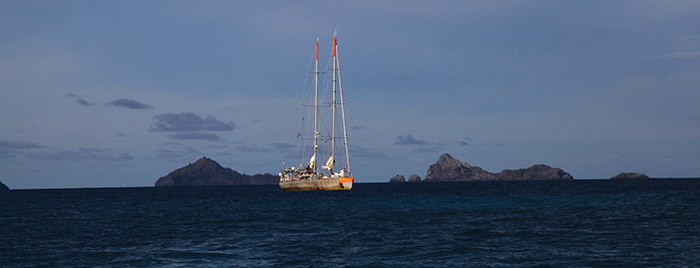Matthew Sullivan, Ph.D., gets priceless reactions when he shares a fun fact from his studies: There are over 50 million viruses in one mouthful of ocean water. Before you cancel your beach trip, these viruses infect microbes, not humans. Sullivan’s lab at The Ohio State University studies and catalogs these viruses, using data processing from the Ohio Supercomputer Center.
While the health of microbes may seem insignificant, these specimens are key in ecological processes, such as photosynthesizing light energy, creating sugars and, more importantly for humans, oxygen.
“Every other breath you take—that oxygen comes from the oceans,” Sullivan said.
When a virus infects a microbe, it changes the microbe’s biochemistry at a genetic level. Viruses move microbe genes around, changing the evolutionary trajectory of host cells. This has far-reaching impacts, from the spread of antibiotic resistance to the impact of climate change.
“We use measurements of currently existing viral populations with compute-intensive models to try to hindcast what those viral populations looked like back in time,” Sullivan said. “Getting this right can help refine our predictive capability so we can make good management decisions in the future."
Until recently, less than one percent of ocean viruses were known. Sullivan was part of the Tara Oceans expedition, in which over 200 scientists circumnavigated the planet gathering ocean water samples. The group increased known viral genomes from approximately 2,000 to 30,000. The Tara Oceans dataset and findings were recently published in the journal Nature. From this data, the group created a reference map of viral communities.
“Imagine the global ocean virus atlas,” Sullivan said. “You can use this new map that we’ve created with tools like the Ohio Supercomputer Center to be able to figure out where the organisms are that we want to study.”
By tripling known ocean viral populations, Sullivan and the Tara group provide the scientific community with a critically needed catalog that could affect many fields of work.
“A lot of smart people are studying the sequence data associated with microbial communities in your body and the soils … but what they often ignore are virus sequence data,” Sullivan said. “Our hope is that if we can generate the reference genomes through … the culture independent surveys of global oceans, people will start to see that virus data and recognize that maybe viruses are important in their microbial story.”
###
Written by Audrey Carson
Project Lead: Matthew Sullivan, Ph.D., The Ohio State University
Research Title: Ecological impacts and drivers of viral communities in the global oceans
Funding Source: The Ohio State University
Website: u.osu.edu/viruslab

